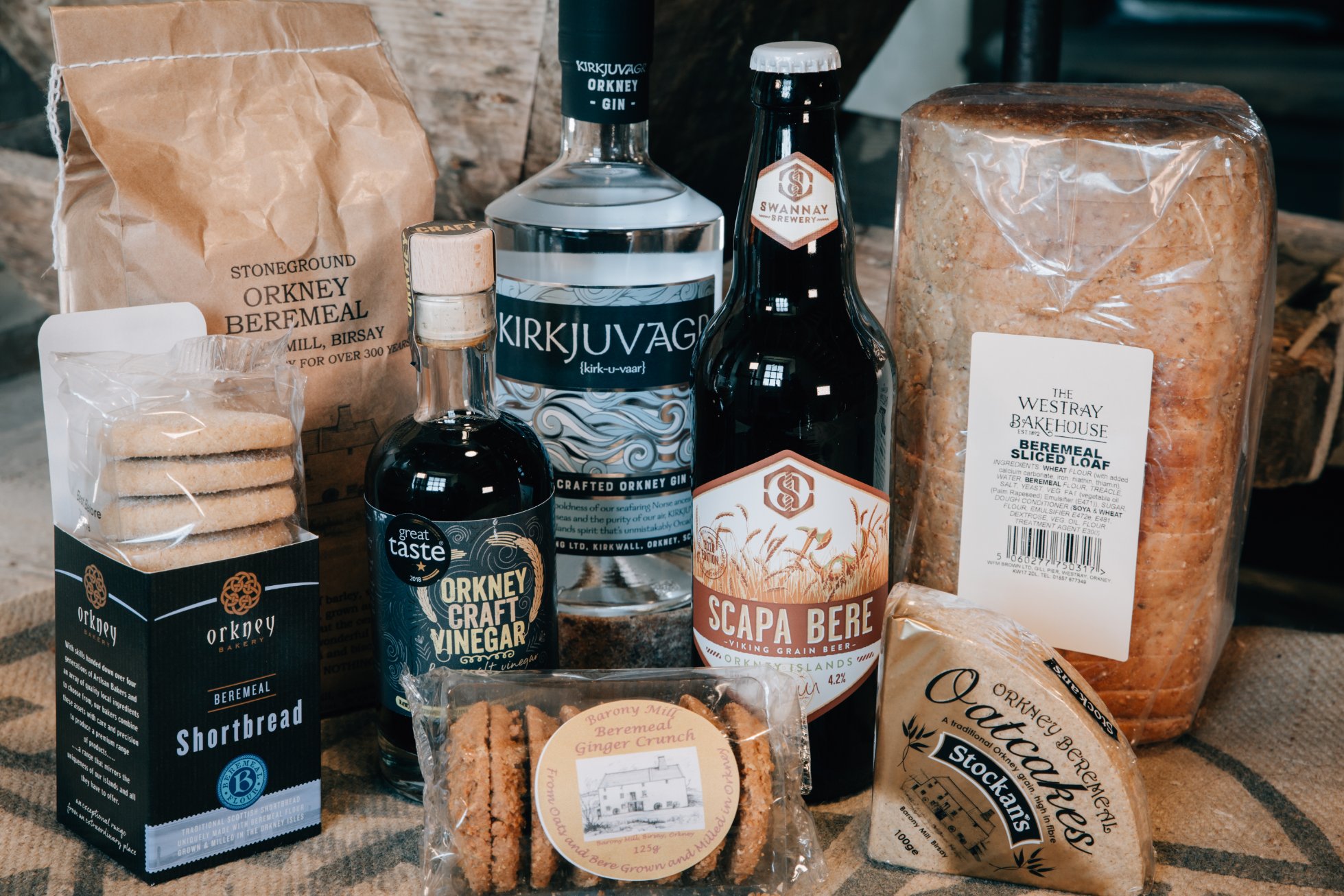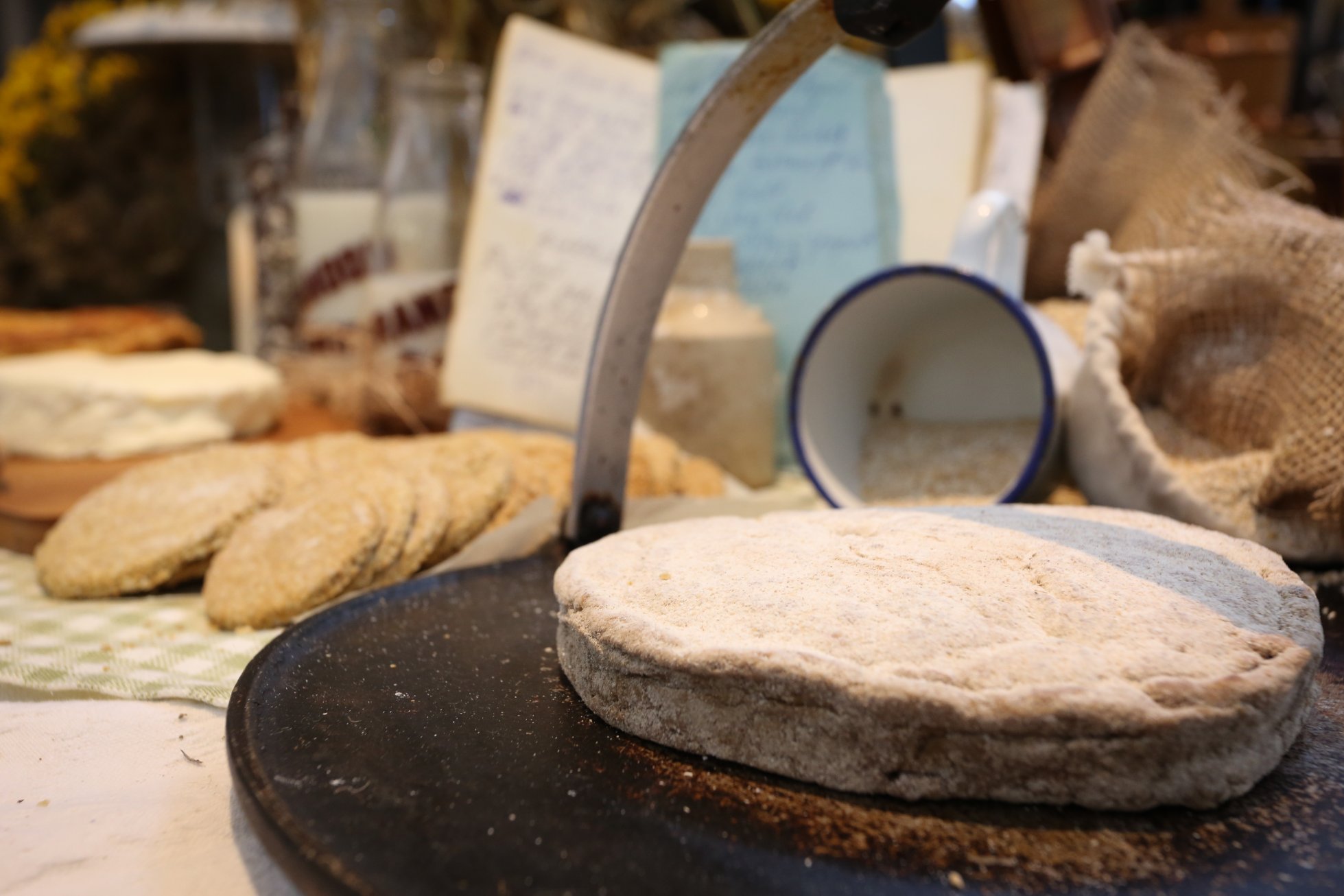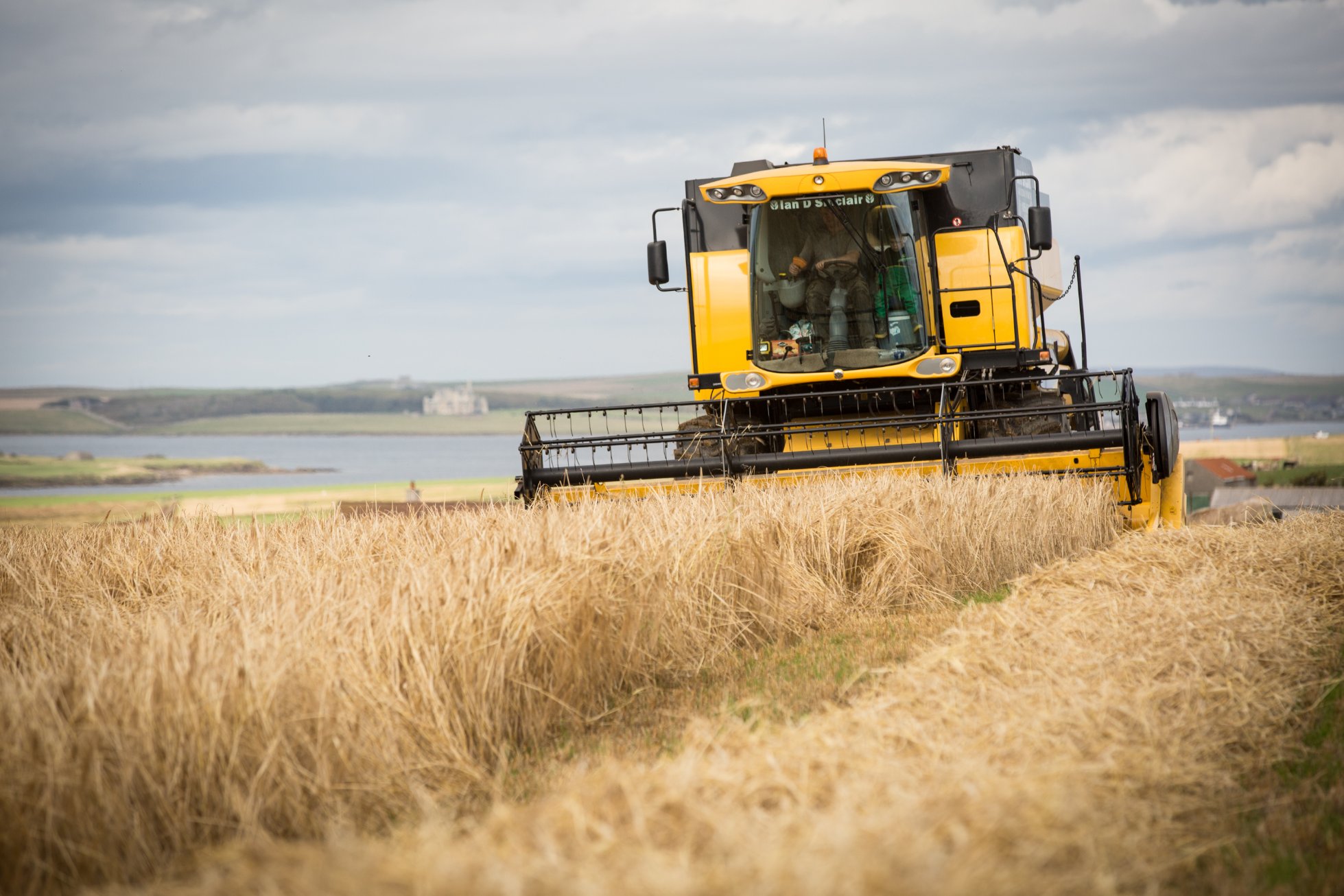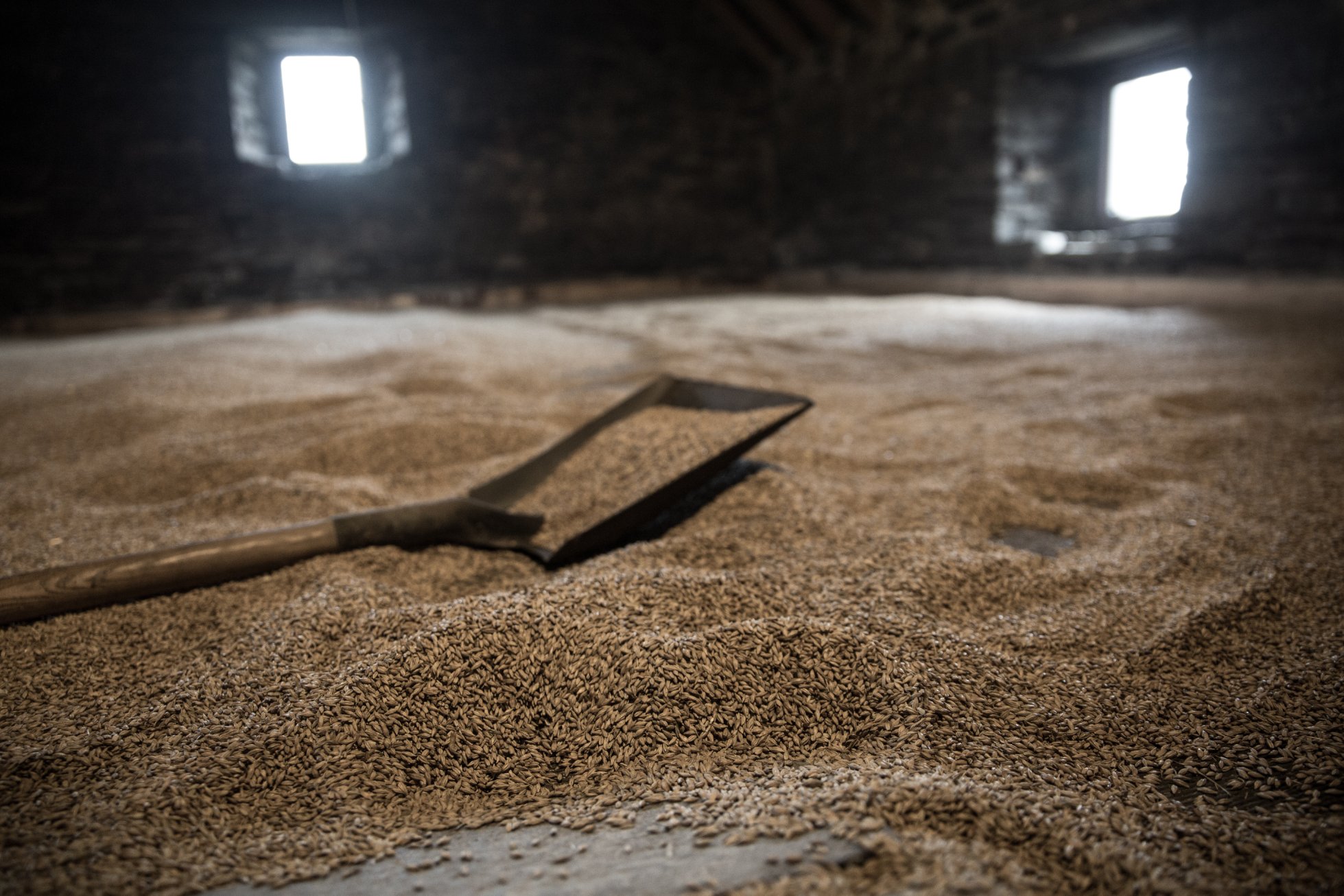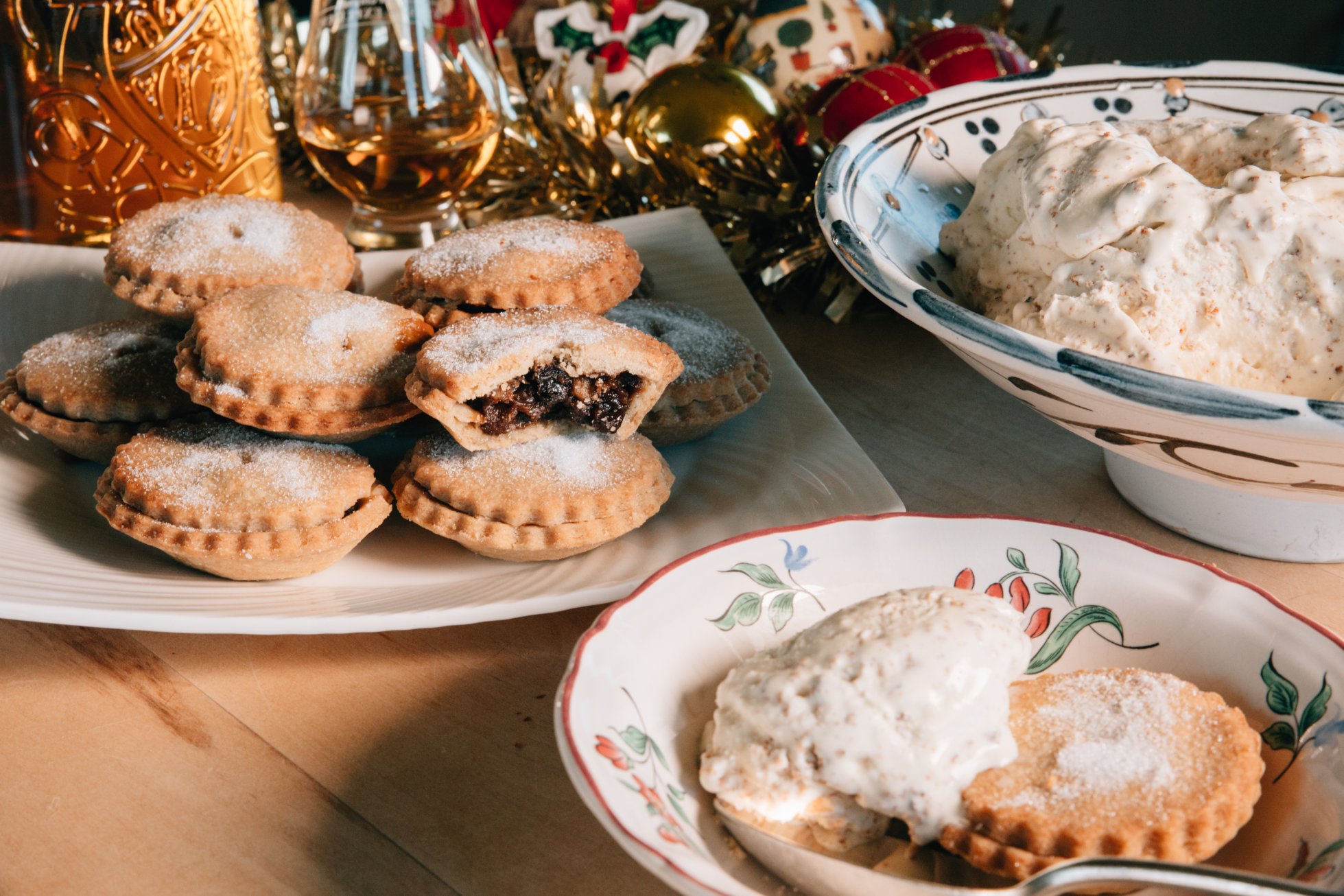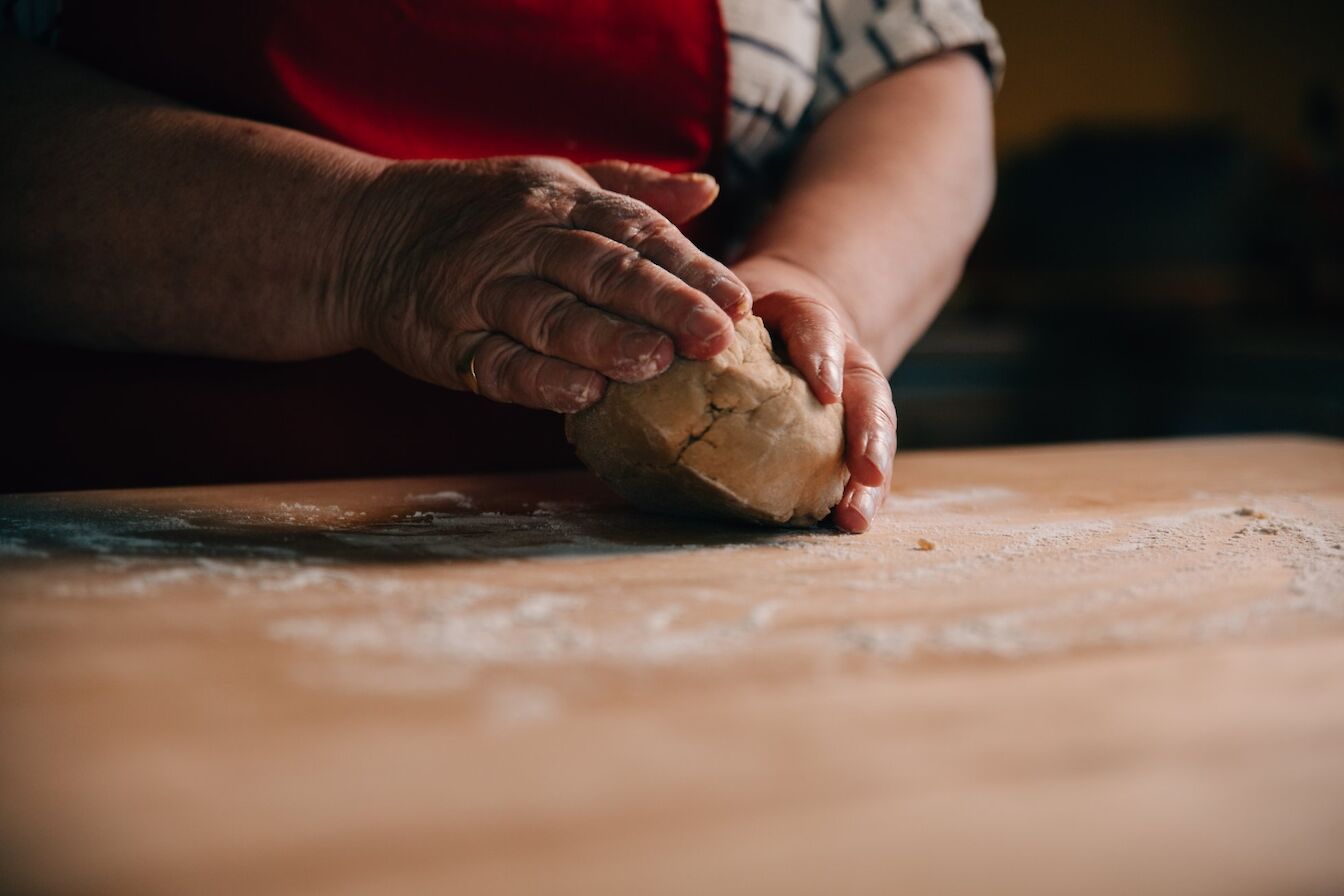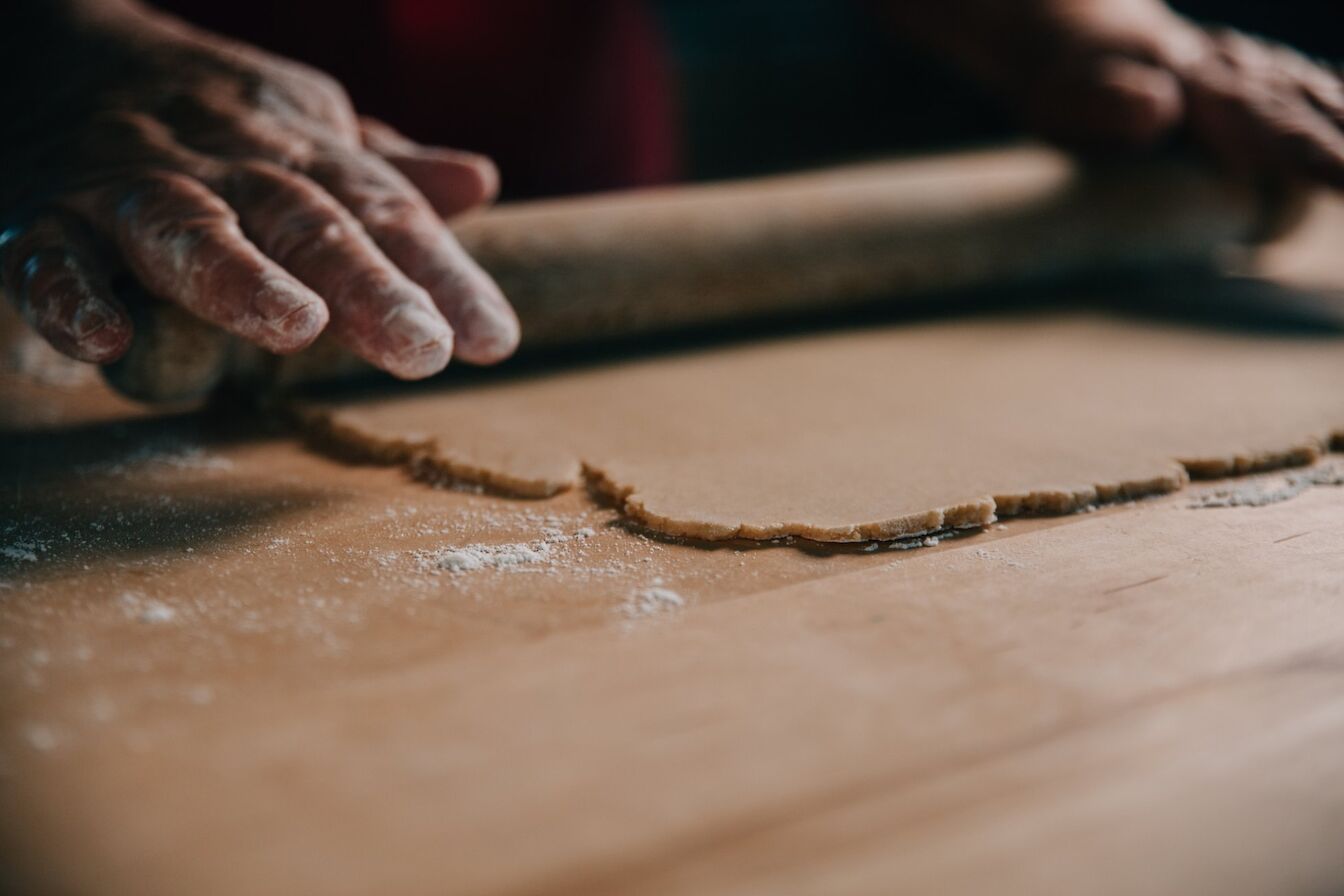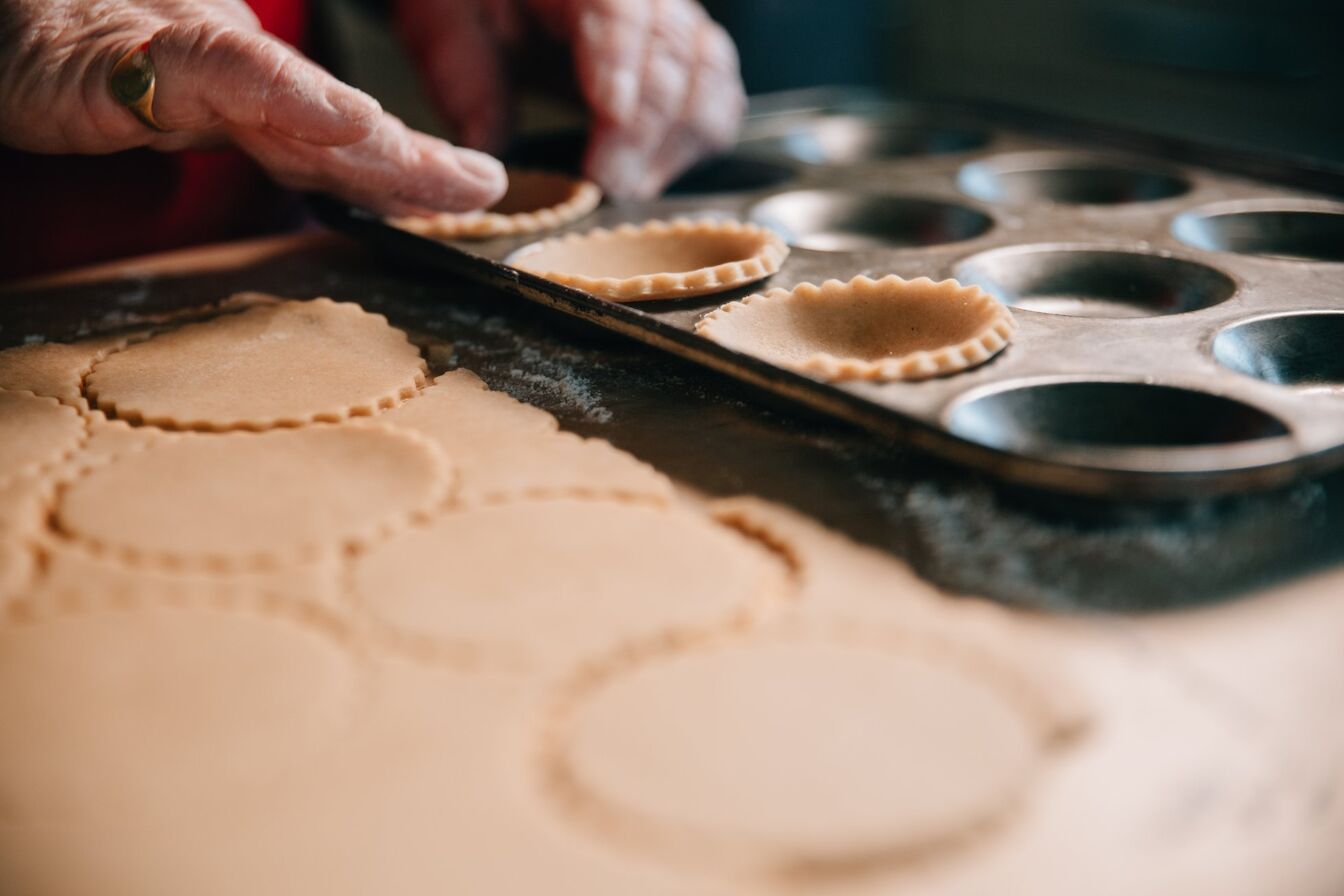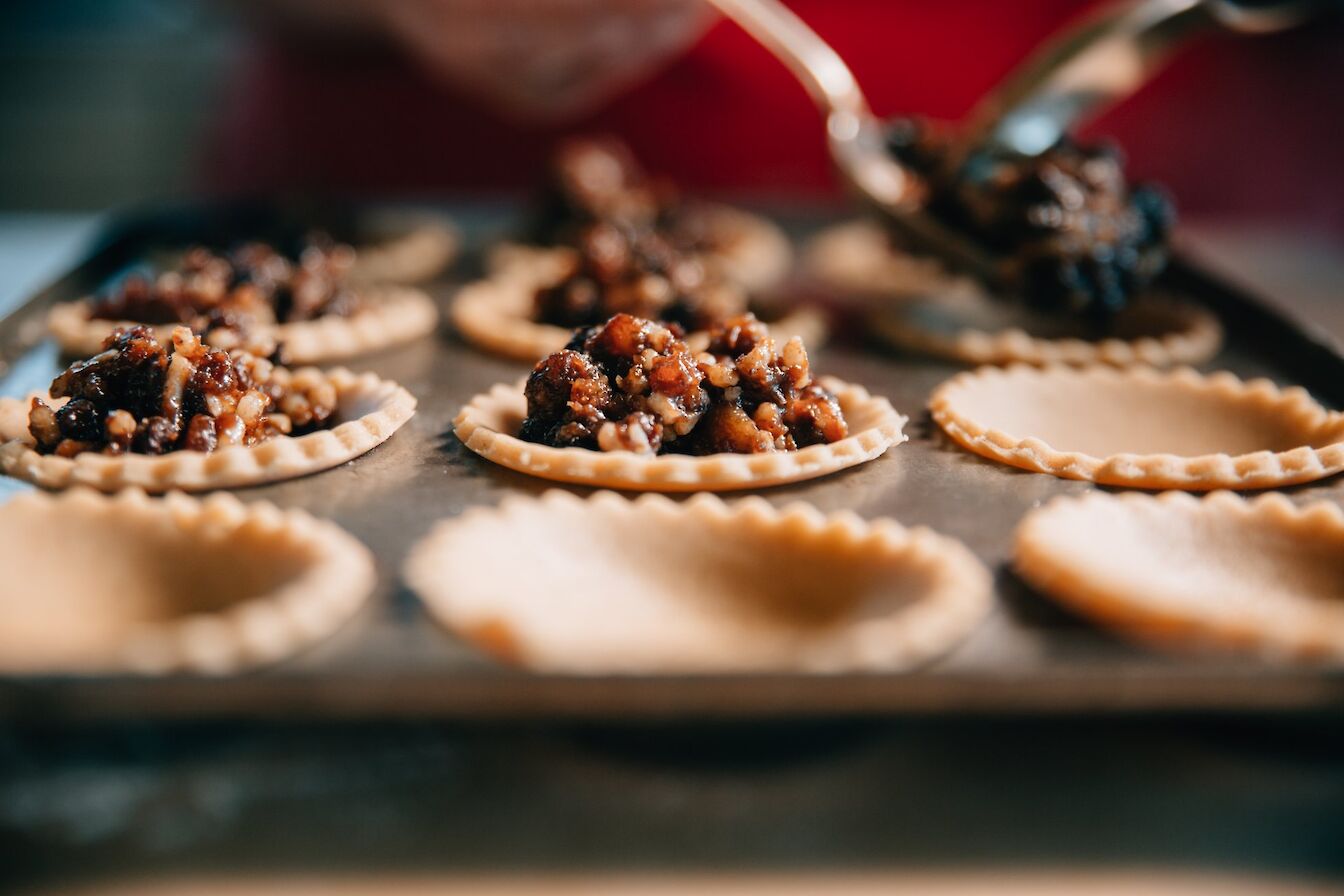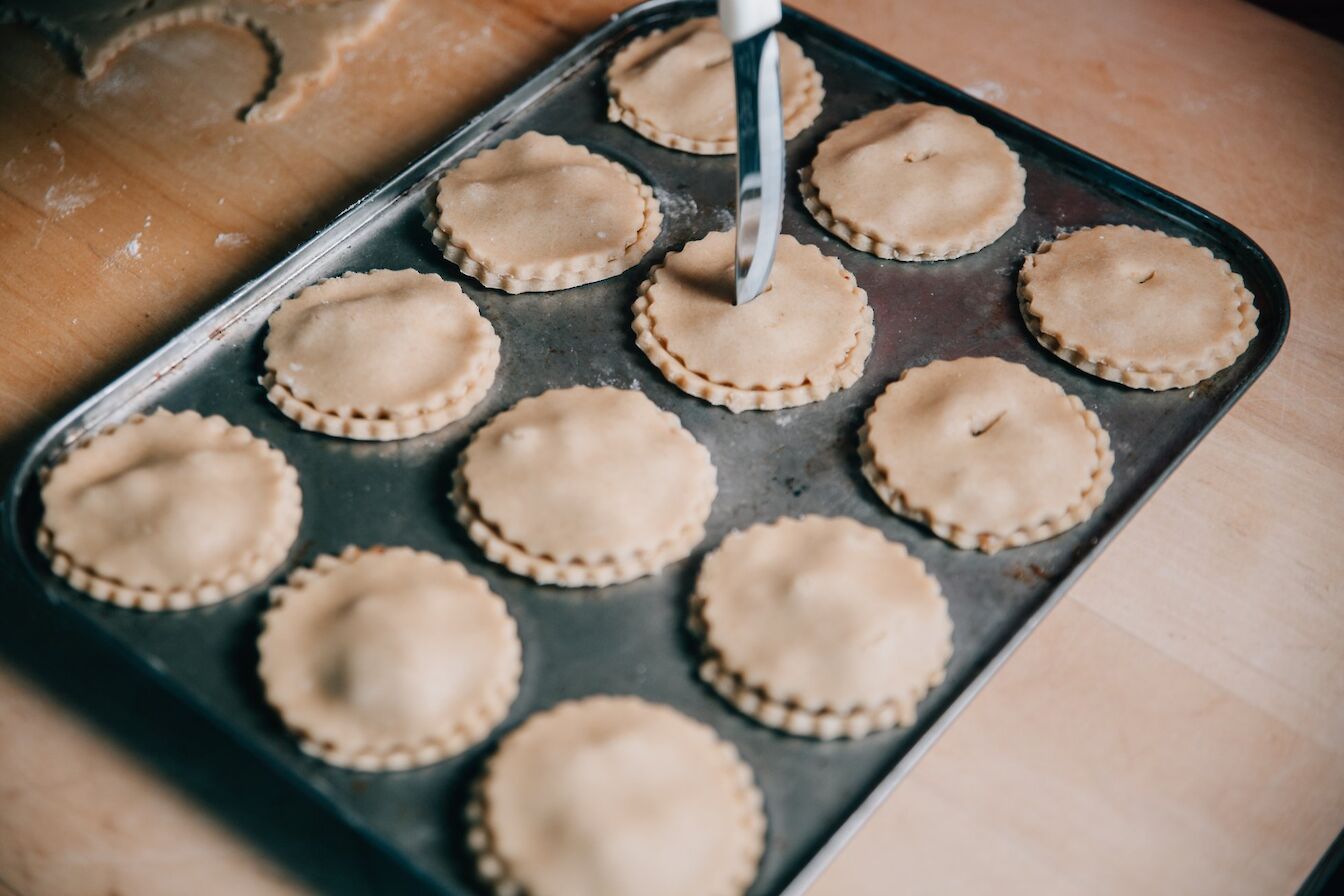Our regular food blogger Rosemary Moon has been taking a closer look at Orkney's ancient Viking grain - beremeal. Keep reading for some recipes to try yourself.
Since moving to Orkney my baking has been transformed by the addition of beremeal to as many recipes as possible.
This ancient strain of barley has been grown in the islands for centuries and, whilst a few farmers elsewhere cultivate small amounts of it, Barony Mill near Birsay is the only mill in the world that actually mills bere into flour.
The unique ingredient is utterly embraced by commercial bakers and brewers and the legions of talented home bakers in Orkney for cakes, breads, bakes and beers with a truly Orcadian flavour. One local cafe has a tea with beremeal berries in it, and there is even a local gin with bere in it too!
Bere has a sweet, nutty flavour and, if cream of tartar is used as a raising agent in bannocks, it often gives a rich nutty colour as well. I’m more of a baking powder cook and so my bannocks are the colour of wholemeal bread.
To inspire a greater use of bere my friend and colleague Liz Ashworth has produced The Book of Bere (pub. Birlinn) - an excellent recipe book with a comprehensive history of bere, within and without Orkney. One of my recipes, Bere bannock and whisky ice cream, from the book follows below - it has proved a great favourite in cookery demonstrations and tastings in the islands.
Stockans Oatcakes in Stromness send their biscuits, including the award-winning beremeal oatcakes, to shops throughout the UK whilst other Orkney bakers, such as Argos Bakery and the Westray Bakehouse, supply the local market with beremeal enriched biscuits and breads.
Barony Mill themselves produce oatcakes and biscuits which are sold at the mill and at William Shearers. Barley is, of course, the key ingredient for the brewing industry and Swannay Brewery produce two ‘Viking Grain’ beers, the more traditional Scapa Bere and an edgy, hoppy ale called Bygg. How much of these can be made each year is of course utterly dependent on the harvest as bere, like any heritage crop, has lower yields than modern cultivars.
One of the most recent developments with bere has been a tea produced for Sheila Fleet’s Kirk Cafe at her new jewellery showroom in Tankerness. The bere ‘berries’ or grains are included in a blend laced with Lapsang and the resulting cuppa is deliciously refreshing. Also new and riding the wave of a growing interest in the condiment is Orkney Craft Vinegar. Made using a ‘mother’ of bere, it is matured in bere whisky casks from Bruichladdich distillery in Islay who, in turn, distill whisky from bere grown for them by farmers in Orkney. These farmers are then listed by farm name on their bere whisky bottles.
There is so much inventive use of bere in Orkney and I have been beguiled by its unique flavour, incorporating it into my day to day baking using a ratio of roughly one part bere to two parts wheat flour for pastries and cakes. Bere is not gluten-free but has a lower gluten content than many other grains making it more digestible for people with a wheat intolerance. It may be used solo for flat breads such as chappatis and soft tacos.
As I prepare for Christmas I seem to do even more baking than usual, with mince pies being required for events from choir concerts to gardening club socials. Making them with a rich shortcrust pastry that has the nutty flavour of bere always garners comments - and you can find my favourite orange, walnut and whisky mincemeat recipe on my YouTube channel to complete a memorable batch of pies. I have also found that my Bere bannock and whisky ice cream, from Liz Ashworth’s The Book of Bere, is perfect to serve with the pies at home.
Bere has been a staple of Orkney food and drink for centuries, and possibly since the great Neolithic sites of Skara Brae and the Ring of Brodgar were in regular use. That in itself is incredible, but for a cook like myself to now have an utterly unique Orcadian ingredient in my larder is an exciting privilege, a possibility born of moving to live - and cook - in Orkney.
Rich beremeal pastry, sufficient for about 24 mince pies
Ingredients
125g beremeal
275g plain flour
25g caster sugar
250g Orkney butter
1 large egg, or 1 medium + 1 yolk
Method
Mix the flours and sugar together in a bowl. Cut the butter into small cubes and add to the flours. Rub in until the mixture begins to look like crumbs then add the beaten egg and continue mixing until the ingredients come together to form a stiff dough.
Knead on a lightly floured surface then roll out and use as required. I bake my mince pies at gas mark 5, 190C.
Cook’s Tip: I make this pastry in a food mixer and always use the butter straight from the fridge. If you use a food processor use the pulse setting to cut the butter into the flour and then to mix it with the egg. Turn the dough out while still at crumb stage and bring it together with your hands. This prevents over mixing the pastry and making it tough.
And, because it's Christmas, here's another delicious beremeal recipe!
Bere bannock and whisky ice-cream Serves 6-8
Ingredients
- 450ml milk
- 1/2 tsp vanilla essence
- 4 large egg yolks
- 100g caster sugar
- 300ml double cream
- 100g bere bannock crumbs, dried in a slow oven or under the grill
- 3 tbsp whisky (not a peaty one, Highland Park 12yo or Scapa Skiren are ideal)
Method
- To make the custard, heat the milk and vanilla until almost boiling. Meanwhile, whisk the egg yolks and sugar until pale. Pour the hot milk onto the eggs, whisking all the time.
- Rinse the pan out with cold water (this prevents the custard from catching on the bottom). Return the mixture to the pan. Cook over a low heat, stirring continuously until the custard thickens enough to coat the back of a wooden spoon. Pour into a bowl, cool then chill for at least an hour,
- Lightly whisk the cream then mix it into the custard with the whisky - don’t add more as the ice cream will not freeze properly. Freeze-churn in an ice cream machine or freeze in a suitable container, beating every hour until almost frozen.
- Add most of the dried or toasted bannock crumbs to the mixture once it has almost frozen and continue freezing or churning. Serve the ice cream with the remaining crumbs sprinkled over.
 Rosemary Moon ‘retired’ to Orkney after a long association with the salmon industry in the islands. The author of 19 cookery books and countless more recipes, including writing for Waitrose and Lakeland, she has brought journalists and food writers to Orkney in the past to show off our diverse and delicious food and drink. After several holidays here Rosemary and her husband Nick have settled in South Ronaldsay but, once a cookery writer always a cookery writer, Rosemary is finding it impossible to stop jotting down the new recipes that she is creating with the island produce.
Rosemary Moon ‘retired’ to Orkney after a long association with the salmon industry in the islands. The author of 19 cookery books and countless more recipes, including writing for Waitrose and Lakeland, she has brought journalists and food writers to Orkney in the past to show off our diverse and delicious food and drink. After several holidays here Rosemary and her husband Nick have settled in South Ronaldsay but, once a cookery writer always a cookery writer, Rosemary is finding it impossible to stop jotting down the new recipes that she is creating with the island produce.
Rosemary also writes and vlogs about whisky and is particularly interested in whisky and food matching. You can follow her on Twitter, Instagram and on her rosemarymoon.com and myorkneylarder.com websites.
The Digital Orkney project has been part financed by the Scottish Government and the European Community Orkney LEADER 2014-2020 Programme.
